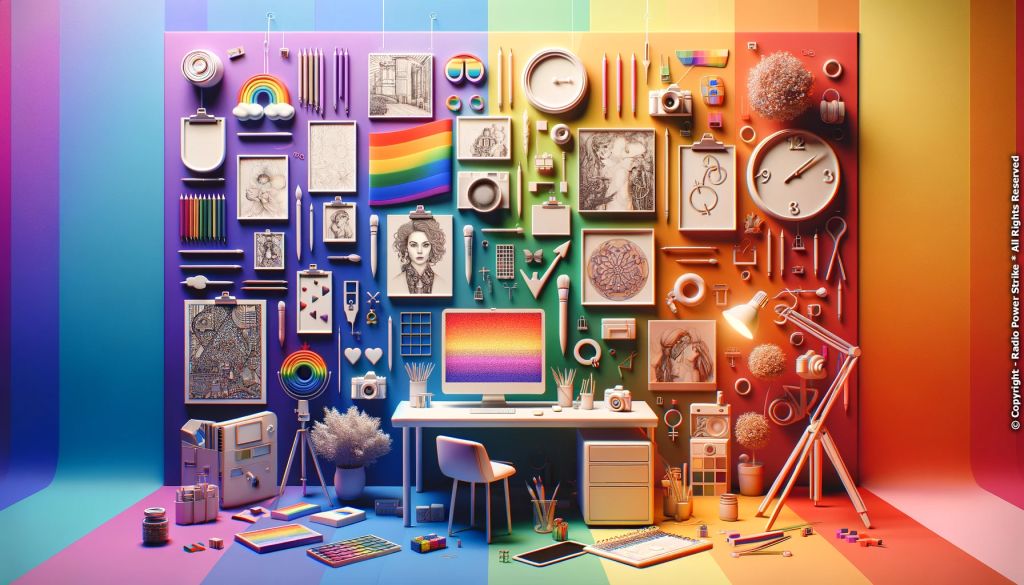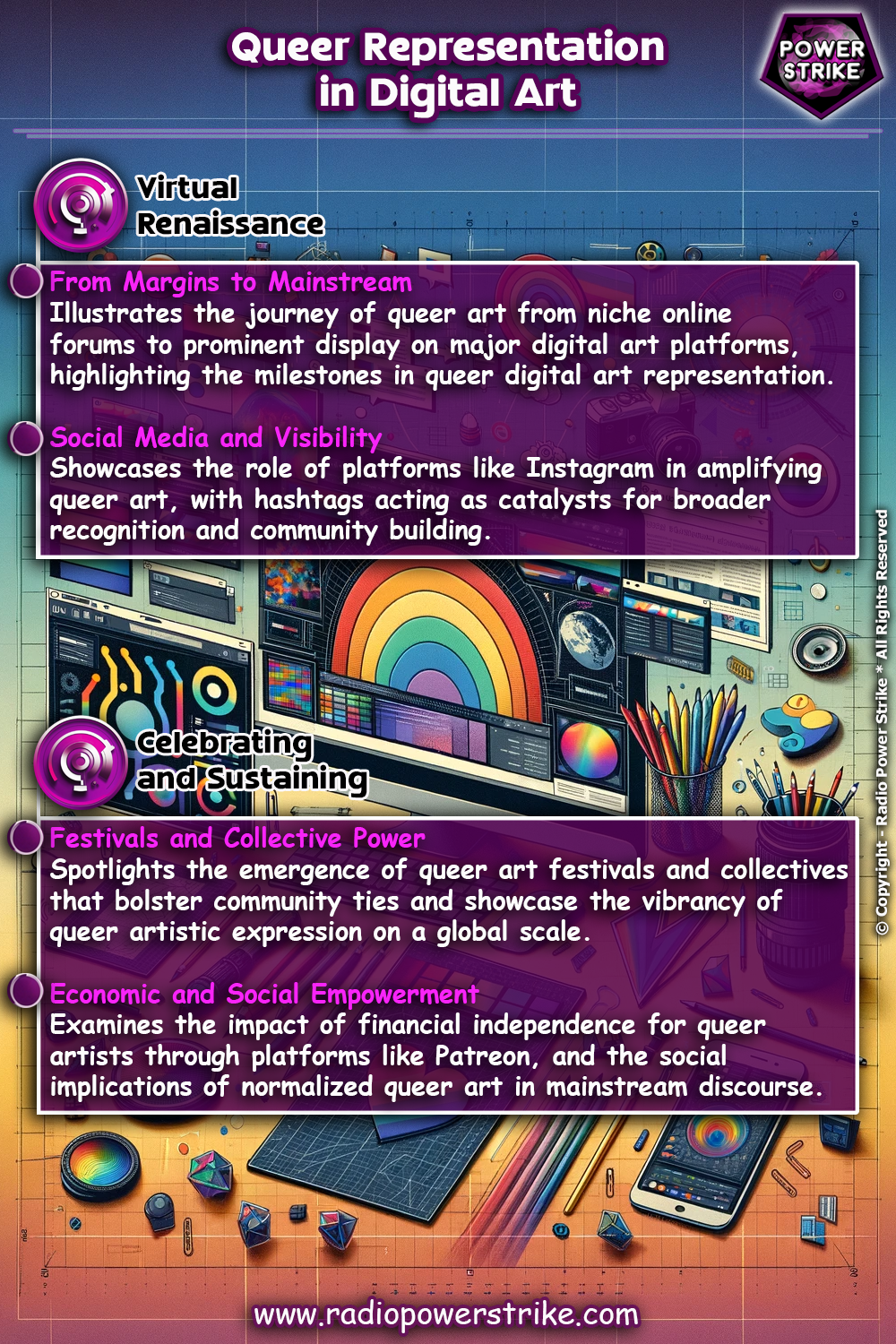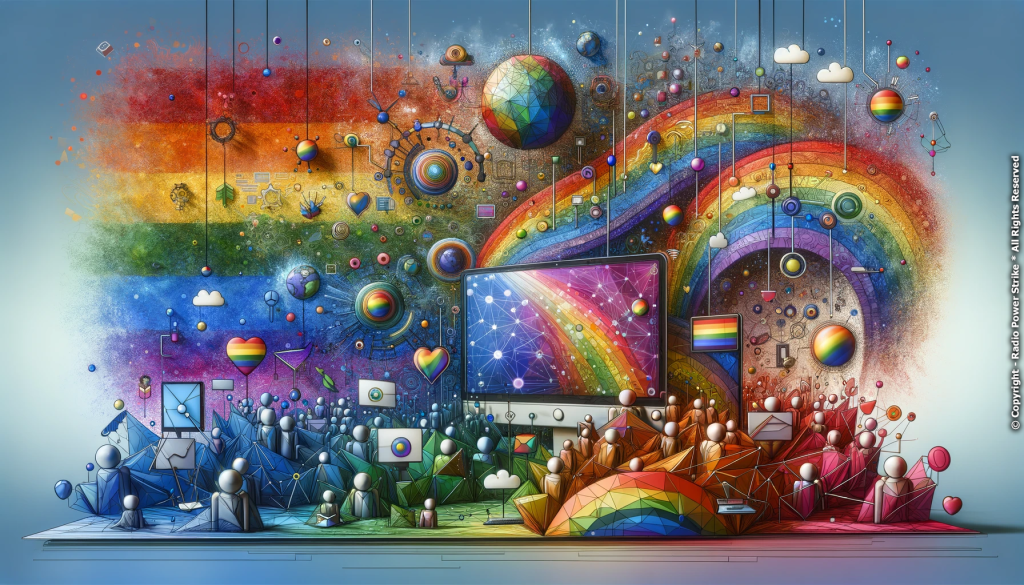The Evolution of Queer Spaces in Digital Art Communities
Reclaiming the Digital Canvas: Queer Narratives in Artistic Expression

The digital realm has become a sanctuary for artists worldwide, providing platforms where they can share, celebrate, and critique their creations. Among these artists, queer communities have found a unique space to express their identity, narratives, and experiences. Over the years, queer spaces in digital art communities have undergone a significant evolution – from being sidelined to emerging as powerful platforms of representation and inclusivity.
From the Margins to the Center
Initially, the digital art world mirrored the real world in many aspects, including its marginalization of queer voices. Queer artists often found themselves restricted to niche forums or having to mask their identities to avoid undue attention or criticism. Platforms like DeviantArt or Tumblr, though inclusive, often saw LGBTQIA+ art tagged as ‘alternative’ or ‘niche’, pushing them to the peripheries.
However, as the internet matured and became more democratized, queer communities began to reclaim their spaces. Dedicated platforms and forums sprouted, where queer art was not just an ‘alternative’ but the mainstay. For instance, platforms like ArtStation began showcasing LGBTQIA+ themed art, not as a separate category, but integrated into the mainstream.
With the surge of social media, queer artists found even more avenues to showcase their work. Platforms like Instagram, with its hashtag-driven ecosystem, allowed artists to curate and highlight queer-themed artwork, effectively breaking the barriers between ‘mainstream’ and ‘alternative’.
Queer Art Festivals and Collaborations
As queer spaces became more pronounced, the rise of queer-centric digital art festivals and collaborations became inevitable. These events, virtual in nature, brought together queer artists worldwide, offering a space to collaborate, learn, and celebrate their identity.
Events like the Queer Art Fest on platforms like Behance or the LGBTQIA+ art showcases on Pinterest provided a stage for queer artists to display their work, unhindered by geographic boundaries or societal biases. These platforms not only elevated queer art but also fostered collaborations between artists, leading to the creation of queer art collectives.
Additionally, mainstream digital art platforms began recognizing the value of queer art. Collaborative events, where renowned platforms partnered with queer art communities, became more frequent, further amplifying the reach and influence of queer artistry.

The Economic and Social Impact of Queer Art Online
Beyond representation, the evolution of queer spaces in digital art communities also brought about tangible economic and social benefits. Queer artists started leveraging platforms like Patreon, Kickstarter, or Etsy, turning their passion into sustainable livelihoods. This economic empowerment, in turn, allowed them to invest back into the community, sponsoring events, or supporting budding queer artists.
On a social front, the visibility of queer art played a pivotal role in normalizing LGBTQIA+ narratives. Digital murals celebrating pride, queer-themed NFT art, or even GIFs and stickers on messaging platforms, made queer themes accessible and ubiquitous. This normalization paved the way for broader acceptance and understanding of queer identities and narratives, transcending the digital realm into everyday conversations and perceptions.
The journey of queer spaces in digital art communities is a testament to the resilience, creativity, and indomitable spirit of LGBTQIA+ artists worldwide. Their evolution, from being marginalized pockets to influential hubs of artistry, not only reshaped the digital art landscape but also impacted economies and societies at large. As we appreciate the art, it’s imperative to recognize and celebrate the transformative journey behind it, echoing the broader quest for representation and inclusivity in all walks of life.


Comments are closed, but trackbacks and pingbacks are open.